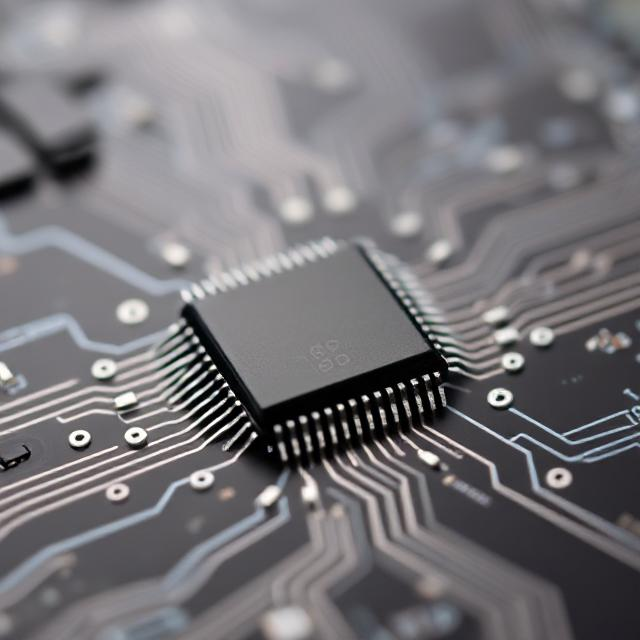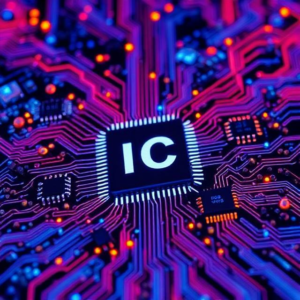Thermal Management in Circuit Design: A Brief Summary
Thermal management plays a crucial role in ensuring the reliability and longevity of electronic circuits. Heat generation in circuit components, such as resistors, transistors, and integrated circuits (ICs), is inevitable during operation. If not properly managed, this heat can cause damage, reduce performance, and shorten the lifespan of the components. Therefore, effective thermal management strategies are essential in circuit design, particularly in high-performance and high-density systems.

Why is Thermal Management Important?
When an electronic circuit operates, electrical energy is converted into heat. This heat must be dissipated efficiently to prevent overheating, which can lead to:
-
Component failure: Excessive heat can cause damage to circuit components, especially semiconductors, leading to malfunction or total failure.
-
Performance degradation: High temperatures can affect the performance of components by altering their electrical characteristics (e.g., resistance or threshold voltages).
-
Reduced lifespan: Prolonged exposure to high temperatures accelerates the wear and tear of electronic parts, shortening their operational life.
Managing heat effectively ensures that a circuit maintains its desired performance and lasts longer.
Factors Contributing to Heat in Circuits
Several factors contribute to heat generation in circuits:
-
Power Consumption: Higher power usage in a component leads to more heat generation. Power dissipates as heat based on the resistance of the components and the current flowing through them.
-
Circuit Design: Dense circuits with tightly packed components tend to trap heat more effectively than those with more spacing. Larger components or those with higher power requirements also generate more heat.
-
Operating Environment: The temperature of the surrounding environment and airflow conditions can influence heat dissipation. Circuits in confined spaces with poor airflow are more prone to heat buildup.
Thermal Management Techniques
Several techniques and strategies can be employed to manage heat in circuit design:
-
Heat Sinks:
A heat sink is a passive component that absorbs and dissipates heat from a circuit. Heat sinks are made from materials with high thermal conductivity, such as aluminum or copper. They increase the surface area for heat dissipation, allowing heat to spread more evenly and cool down components. -
Thermal Pads and Pastes:
Thermal pads and pastes are materials used to improve thermal contact between components (e.g., ICs) and heat sinks. They help transfer heat more effectively from the component to the heat sink, improving thermal management. -
Active Cooling:
In some high-performance applications, active cooling systems such as fans or liquid cooling are used to remove heat more efficiently. Fans blow air over components to cool them down, while liquid cooling uses coolant circulated through pipes to absorb and carry away heat. -
Thermal Via and Copper Layers:
Printed circuit boards (PCBs) can include thermal vias (small holes filled with conductive material like copper) to direct heat away from sensitive areas of the board. Copper layers within the PCB can also improve heat conduction, helping to spread heat more evenly. -
Component Selection:
Choosing components that are designed for better thermal performance can significantly help in managing heat. Low-power components or those with higher efficiency generate less heat during operation. Additionally, using components with built-in thermal management features, like thermal shutdown or thermal protection, can protect the circuit from overheating. -
Thermal Simulation:
Modern design tools allow engineers to simulate how heat will behave within a circuit before physical prototypes are made. This helps to identify areas of high heat concentration, allowing for the optimization of component placement, heatsinks, and other cooling measures before construction begins.
Key Design Considerations for Thermal Management
-
Power Distribution and Density:
High-density circuits can cause localized hot spots. Ensuring an optimal layout with adequate spacing between components and considering the power distribution can minimize these effects. -
Thermal Pathways:
Designing clear thermal pathways for heat to flow away from sensitive components is essential. This may involve strategically placing heat sinks, vias, or using specific materials that conduct heat better. -
Ventilation:
Ensuring that there is adequate airflow in the environment surrounding the circuit is another critical factor. This can involve both passive ventilation (like holes in the casing) and active ventilation (fans or blowers). -
Ambient Temperature:
Circuit performance can be heavily influenced by the ambient temperature, particularly in outdoor or industrial settings. Designing for the maximum expected ambient temperature ensures that the circuit will function correctly even under extreme conditions.
Challenges in Thermal Management
Despite the techniques mentioned, managing heat in circuit design remains challenging due to:
-
Miniaturization: As circuits become smaller and more complex, components are placed closer together, which can trap more heat.
-
High Power Devices: High-performance devices such as processors and GPUs generate significant amounts of heat, making efficient thermal management critical.
-
Cost and Space Constraints: In many designs, there are limits to how much can be spent on cooling solutions, or the space available for heat dissipation might be limited.
Conclusion
Thermal management is a key aspect of circuit design that directly impacts the performance, reliability, and longevity of electronic systems. Through careful planning, simulation, and the use of cooling techniques like heat sinks, thermal pastes, and active cooling, engineers can effectively manage heat dissipation in circuits. As technology advances, efficient thermal management will continue to be a critical factor in ensuring that high-performance electronic devices remain safe and functional under demanding conditions. Proper thermal design not only improves a circuit’s lifespan but also ensures its optimal operation.











